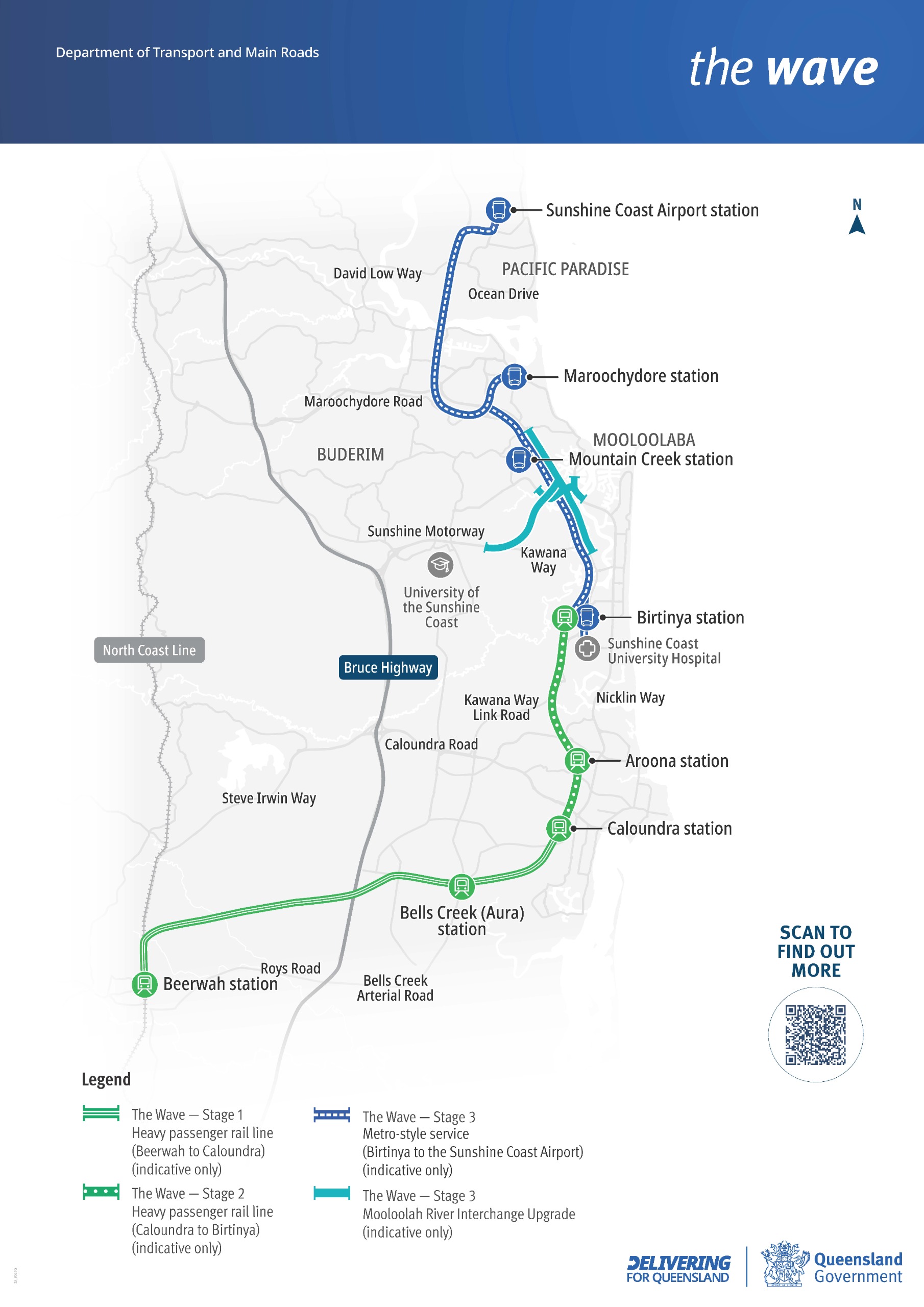A new rail line connecting Brisbane, Moreton Bay and the Sunshine Coast
A legacy project for the Sunshine Coast delivering a range of benefits for the community:
- Supports growth – people will be able to travel faster, more efficiently, reliably and safely between homes, employment and social services such as healthcare and education.
- Directly connects a new sub-region to the SEQ rail network – connects the eastern region of the Sunshine Coast to greater South East Queensland – connecting the economic centres of Brisbane, Moreton Bay and the Sunshine Coast via direct public transport for the first time.
- Encourage tourism – will support and encourage tourism with stations located within walking distance (or efficient multi-modal transfer) to the beaches, sports precincts, accommodation, hospitality and retail centres of the Sunshine Coast.
- Greater mode choice, more sustainable travel – people travelling on The Wave – Stages 1 and 2 (Rail) will have a choice of mode which is competitive (much faster) than a private vehicle. This will encourage more sustainable travel and provides people a true alternative to private vehicle. This will improve the lives of those unable to access a vehicle or drive.
- A new active transport network – the project will also deliver an extensive new active transport network for the region.
Corridor (route)
The Wave – Stages 1 and 2 (Rail) builds on planning completed in 2001 by the Caboolture to Maroochydore Corridor Study (CAMCOS). The CAMCOS corridor was preserved (protected from development) in 2001. This corridor included provision for a single-track rail line, designed to rail standards in 2001. Rail planning and policies have changed since 2001; the corridor alignment was reviewed as part of the business case.
The detailed business case included a review of the preserved corridor to refine the alignment and station locations, a detailed analysis of design, risks, financials, economics, environmental impacts, community impacts and utilities.
The alignment review:
- updated the alignment to protect for 2 tracks designed to meet current Queensland Rail standards, including provision for maintenance and operations
- confirmed station locations that allow for the design of accessible facilities and cater to forecast demand (including space for park ‘n’ rides, bus interchanges and kiss ‘n’ rides)
- reduced curves to enable operational efficiencies, increase rail speeds and decrease travel time
- minimised environmental, cultural heritage and social/community impacts.

Maps will be further refined in the detailed design phase.






